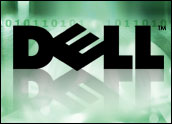
Dell took an important step toward crafting a turnaround Thursday, with the PC maker saying profit had risen 46 percent in the second quarter thanks to cost-cutting moves. The company’s sales beat forecasts as its new retail strategy began to take shape.
In fact, the No. 2 maker of personal computers beat Wall Street targets for both profit and sales, with shipments to new retail partner Wal-Mart playing a role in the sales surge along with continued strength in the server and storage arenas.
Round Rock, Texas-based Dell said it earned US$733 million, or 32 cents a share, in the quarter, a 46 percent increase in profit over last year. Revenue was $14.8 billion, up from $14.1 billion a year ago.
Early Stages of Transformation
“While our results demonstrate we’ve made progress against our goals, we are still in the early stages of transforming our company’s structure, costs and operations,” said CEO Michael Dell.
The company emphasized that the numbers are to be considered preliminary pending the coming restatement of earnings for parts of four years, the result of an internal probe into accounting and bookkeeping issues that found persistent overstatement of figures — a finding Dell hopes will enable the Securities and Exchange Commission (SEC) to terminate its probe into the company’s practices.
The quarterly results provided hope for those looking for signs that a turnaround was under way. Michael Dell took the helm at his namesake company earlier this year, after former CEO Kevin Rollins failed to reverse a trend of shrinking profits and market share losses to leading PC maker HP.
Michael Dell set about revamping the PC maker’s organization, and cut 10 percent of the company’s workforce even while beefing up customer service. He also unveiled a new, colorful line of notebooks, launched a small business unit known as “Vostro” and embarked on a retail channel strategy that includes select models being made available through Wal-Mart stores in the U.S. — a dramatic departure from the company’s original direct-sales model.
Work Remains
Dell’s enterprise business lines turned in a strong quarter, with server sales posting 14 percent year-over year growth to $1.6 billion and storage sales rising 20 percent to $600 million.
The second-quarter numbers suggest steady progress for Dell in starting the long road back to the top of the PC and server industry, Ovum analyst Ian Brown told the E-Commerce Times.
The turnaround plan has come at a cost, however, with expenses eating into profit in the quarter due to layoffs, stock options to departing CEO Rollins and investments meant to shore up customer service.
To compete effectively with HP, IBM and others for business sales, Dell will need to keep investing in its services and support capabilities, Brown said.
“Dell still has more investments to make on the services side,” he added. The investment will need to include continued improvements to services and software offerings, which in turn will impact profit. “Dell wants to become a solution supplier and building those capabilities will take time and money,” Brown noted.
Dell shares rose in early trading Friday, climbing about half a percent to $28.58.
The Wal-Mart Effect?
Citing the plans to restate results, Dell did not give a formal forecast, but indicated that gains in component price savings may start to slow down, making it harder to boost profits through cost-cutting.
Dell provided little insight into the impact of the Wal-Mart deal in the U.S. and counterpart retail deals overseas. However, Dell’s second quarter PC shipment growth of 5.7 percent over the first quarter included shipments to retailers, according to Gartner.
As important as the consumer is to Dell, the server shipment figures underscore how the company needs to address both its enterprise and consumer businesses at the same time, Gartner analyst Martin Reynolds told the E-Commerce Times.
Several of Dell’s recent initiatives strive to do just that. Vostro aims to give small businesses no-nonsense tech solutions, while the rollout of colorful notebook PCs was meant to help set those machines apart from the more drab machines used by business and the Wal-Mart effort lets Dell reach consumers its direct-sales approach may have missed.
‘Work to Do’
“There is lots of work to do in all of the areas, but Dell started to fill in the details of its plan for making change,” Reynolds said. Now, with results starting to appear, investors are upbeat and Dell’s image as the beaten-down player in the PC market can be turned around as well.
“Dell seems to have acknowledged that it can’t differentiate on price alone any more,” Reynolds added.
Dell has had some trouble executing amid the changes, with its new notebook lineup delayed and later pared back and some PC orders stalled due to slow shipment of flat-panel displays. Those problems may be offset, however, by Dell’s reinvigorated customer service efforts, an area where the company was widely seen needing drastic improvement.
As strong as the start to the turnaround is, Dell’s improvement efforts will be hampered by competition from other PC makers, American Technology Research analyst Shaw Wu said in a research note. Current competition is “the fiercest the company has ever seen,” he said. The competition not only includes HP and China’s Lenovo but a reinvigorated Acer, which is in the process of buying Gateway to greatly increase its presence in North America.























































Social Media
See all Social Media